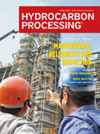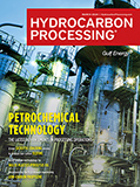Furnaces
Process design consideration for a deep-cut vacuum distillation unit—Part 1
In the recent past, many US refineries have been reconfigured to process heavy opportunistic sour crudes.
Understand the installation of steam tracing for long-term application success—Part 1
One of the most misunderstood and misused components of conductive steam tracing systems is heat transfer compound (HTC).
A game-changing approach to furnace safeguarding
This work is a follow-up article to “Automate furnace controls to improve safety and energy efficiency,” which was published in the June 2014 edition of <i>Hydrocarbon Processing.</i>
Additive solutions to SOx emissions in FCCUs
Sulfur oxide additives are typically based on hydrotalcite or magnesium aluminate spinel-type structures. Magnesium alumina is the pickup agent present in the most effective SO<sub>x</sub> additives on the market; therefore, to optimize SO<sub>x</sub> reduction, it is critical to maximize the amount of the critical magnesium component in the fluid catalytic cracking unit (FCCU) in an efficient and cost-effective way.
Business Trends
It is never a good sign when a piece of equipment exhibits unsafe behaviors—such as large, unexpected vibrations, or cracks forming around instrument ports—particularly in the thermal reactor of a sulfur plant, where high-temperature gaseous streams chemically react as part of the process that produces elemental sulfur.
Develop competence in the process industry with a digitalized operator learning path
Industrial digitalization is changing the standards for operator training in the global process industry.
Energy losses from the radiant firebox wall of pyrolysis furnaces
The steam cracking unit is highly energy demanding, requiring high-severity pyrolysis furnaces to break the carbon-carbon bonds, as well as high pressure for the purification of its products.
Ensure uniformity of air preheater flow to obtain maximum heat transfer efficiency
Uniform flow distribution inside process equipment is desirable for maximizing performance.
Carburization inspection robots for radiant tubes inside ethylene cracking furnaces
In an olefins plant, the reliability of ethylene cracking furnaces is one of the deciding factors used to indicate whether or not the plant can be operated at its design productivity.
Modified revamp process to reduce energy use in an SDA unit
Solvent deasphalting (SDA) is emerging as a low-cost, bottom-of-the-barrel upgrading process to recover valuable oil from short residue. This oil can either be further processed to make lube-oil-based stocks or cracked in secondary processing units.

- India receives fuel oil cargo in Russian SCF tanker after brief halt 4/26
- Biden administration (U.S.) to release SAF tax credit model 4/26
- Boeing, Wagner advance Australia’s SAF Industry 4/26
- S-Oil expects Q2 refining margins to remain steady then trend upward 4/26
- Vitol to charter supertankers from U.S. to Nigeria's Dangote refinery 4/26
- Refiner Valero beats profit estimates on resilient demand, tight supplies 4/26




